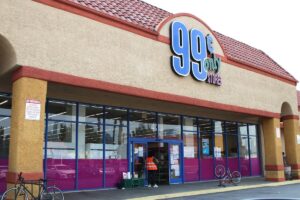This article on covered calls primer money for nothing was a guest post by Dirk Leach on Sure Dividend. We were permitted to republish it here.
Writing covered calls is not quite “Money for nothing”, but it is as close to free money as I’ve been able to find.
I spend roughly an hour every other week looking for possible covered call opportunities, reviewing my existing covered call positions, and/or rolling those positions at risk of getting exercised.
This article explains what covered calls are, how you find good covered call opportunities, and how to actually write (sell) covered calls. I’ll also cover the risks of writing covered calls (miniscule) and how to roll up and out a covered call at risk of being exercised.
Finally, I’ll provide some specific examples of stocks that are good candidates for writing covered calls versus stocks that are not as good a candidate.
Covered Calls
A covered call option is a financial transaction in which the writer (seller) of the call option receives a premium (cost of the option) in return for granting the call option buyer the right to buy the specified number of shares from the investor at the agreed upon strike price for a period of time determined by the option expiration date.
The buyer of the covered call has the right (not obligation) to purchase the underlying shares from the investor at the option strike price anytime up through the option expiration date.
The investor’s long position in the asset is the “cover” because it ensures the call writer (seller) can deliver the shares if the buyer of the call option chooses to exercise the option.
Stock options are traded as “contracts” because the transaction is truly a contract between an option seller and an option buyer regarding the option to purchase shares owned by the option seller at a specified price for a specified period of time.
One “contract” represents 100 shares of stock. For example, if you owned 500 shares of AT&T (T), you could sell a call option for a minimum of one contract (100 shares) up to a maximum of 5 contracts (500 shares).
AT&T has long been a favorite stock for income investors. Until its asset merger with Discovery, it had raised its dividend for over 30 years in a row.
AT&T was formerly a member of the Dividend Aristocrats, a group of 65 stocks in the S&P 500 Index with 25+ consecutive years of dividend raises. You can see all 65 Dividend Aristocrats here.
AT&T is also a useful example for writing covered calls to further increase income.
There are six exchanges in the US that trade stock options with the largest being the Chicago Board Options Exchange (CBOE) clearing roughly one third of all options traded in the US.
The Options Clearing Corporation issues options traded on the floor of the CBOE and also clears the CBOE transactions.
The existence of the Options Clearing Corporation ensures that buyers and sellers of options remain anonymous.
Look up a stock using the search bar at the top, look just below the current stock price for the line of blue links, and near the right side you will find the options link. A snip is provided below.
Source: Yahoo.com
Once you get to the options table, you will need to pick an expiration date for the call option in which you are interested.
For this example, we’ll stick with T and choose the September 16, 2022 table from the drop down menu. The table will have changed since this article was published, but you will see something similar to the one below.
Across the top of the table above you see the following headings.
- Contract Name – This is the option symbol similar to a stock symbol. The symbol does include both the exercise date in YR/MO/DY format (22/09/16), a “C” indicating it is a call option, and the strike price for the option contract (e.g. 19000 = $19.00).
- Last Trade Date – Not much here other than it gives an indication of how active the trading is for this option contract.
- Strike Price – This is the price at which the writer (seller) of the option agrees to sell the shares of the underlying stock, T in this case, to the option buyer if the stock price reaches or exceeds the Strike Price and the option is exercised.
- Last Price – This is the price (option premium) of the last option contract traded for that option. This gives you an indication of the most current option price (premium) and generally falls between the Bid and Ask prices.
- Bid/Ask Price – These are the current Bid price offered by option buyers and the Asking price by option sellers. This is where you need to focus your attention.
- Change – This is the most recent price (premium) change, up or down, in the most recent option trade.
- Volume – This is the number of option contracts that have traded which gives you another indication of how active that particular option is being traded.
- Open Interest – This is the number of open options contracts which also gives indication of how active a particular option is trading.
- Implied Volatility – This is the expected level of volatility in the stock price during the remaining life of the option. Generally, higher volatility translates into higher option price (premium). Note that in the table above, the volatility and the option prices, are quite modest.
Selecting A Call Option To Write (Sell)
When searching for covered call candidates, I typically try to find options that will provide a 10% or greater annualized return based on the option price (premium) versus the current price of the underlying stock.
I also try to select options with a strike price at least 10% above the current price of the underlying stock.
You can’t always get both of those constraints satisfied because, as you go up in option strike price, the price (premium) for the option goes down.
Also, stocks with low volatility (daily price fluctuation), like T, often do not have options prices that meet the 10%/10% criteria.
If we use the T September 16, 2022 options table above, we can work out an example to see if we can get to the 10%/10% criteria.
With the stock price for T currently about $21, 10% above that price is roughly $23. At a strike price of $23, the September 16, 2022 option price (premium) is about $0.40. and roughly 108 days out. So, the annualized premium is ($0.40/$21) x (365/108) = 0.064 or 6.4%
Nowhere near my desired 10%. Does this mean T is not a good covered call options candidate? No, but it does mean that I’d have to accept a lower annualized return, a lower strike price, or some combination of those two.
I’ve made good money on T options by accepting a lower strike price closer to the current stock price and accepting less than a 10% annualized return. This works because T is a low volatility stock and the risk of T shooting up past the strike price (deep in the money) is pretty small.
Risks Inherent in Writing Covered Calls
The short answer is that there really is no risk. If you write your call options at a strike price above the current stock price and the call gets exercised (because the stock price rose above the strike price), the worst that can happen is your shares get called away at that strike price and you keep as compensation the covered call premium. That’s it.
It is impossible to lose money on covered calls provided you write (sell) those calls at a strike price above the current stock price.
What happens if the stock price blows past the strike price but I really don’t want the shares of the stock I’ve pledged to be called away; I don’t want to sell the shares?
The simplest approach would be to buy back the “in the money” call option. However, being “in the money” often means “buying to close” the call option will be an expensive choice.
The strategy I use is referred to as rolling an “in the money” call option “up and out”. In the nearly 7 years I’ve been writing covered calls, I’ve had exactly one stock called away.
This was shortly after I started writing covered calls and I did not yet fully understand how to roll an option. I roll call options “up and out” pretty frequently now; on the order of 12 to 15 times a year to prevent a stock I wish to retain from being called away.
Rolling an option “up and out” takes advantage of the time value of options. The figure below shows a generic time value decay curve for a standard call option.

The price (premium) of a near term option (e.g. a month from expiration/exercise) is lower compared to the same option strike price 3-4 months further out.
This is because with a longer duration to the expiration/exercise date, the probability of the stock price exceeding the strike price is higher; sometimes significantly so. By executing a simultaneous “buy to close” on the “in the money” option with a “sell to open” on a longer dated option, you can often pick up enough time value to also raise the strike price up another increment or two.
Rolling “up and out” works well with options that are liquid with close pricing increments (e.g. $1.00) and is harder to accomplish with a stock whose options are less liquid and often priced in increments of $5. It is a lot easier to jump to a higher strike price increment of $1.00 than do so with an increment of $5.
Other Covered Call Considerations
Below is a list of other considerations that an options writer should understand and apply when researching what calls to write.
- Trading options on large companies is easier than for smaller companies. Trading options on companies like AT&T, Verizon (VZ), Prudential (PRU), and Discover (DFS), is much easier than trading options on companies like Physicians Reality (DOC), Iron Mountain (IRM), and Old Republic International (ORI). This is due to both company size and stock price volatility (or stability); Real Estate Investment Trusts typically have low price volatility and fairly illiquid options.
- In selling covered calls, you will get your best option prices (premiums) on days when the underlying stock is rising sharply. I typically write calls on up days and roll up and out on down days. The latter part of that sentence may sound like a contradiction. On days when the market (or a stock) is sharply up, near term options are impacted much more than are long term options. Because you are buying back your near term option, you want the option price (premium) to be as low as possible. You also want the long term option you are simultaneously selling to be as high as possible. This typically is the case when the market or the stock is heading down.
- The ability/permission to trade options with your current broker may not be automatic. You may have to fill out a form to show you have the means and experience to trade options. Typically there are three levels (I, II, III). Writing covered calls and selling cash secured puts (maybe another future article) are level one; the lowest risk options trades.
- You do need to own individual stocks in sufficient quantity to write covered calls against. Since one options contract represents 100 shares, you have to own at least 100 shares to be able to write a covered call.
- Check your brokers options trade commissions. Of late, most brokers have been lowering their commissions but some still have significant commission costs.
- Proceeds from trading options are taxed as either short term or long term capital gains similar to gains on trading stocks.
Conclusion on Covered Calls Primer Money For Nothing
Writing (selling) covered calls is a relatively simple options strategy that has essentially no risk other than potentially having the underlying stock called away. Even that can typically be prevented by rolling the option up and out prior to the option expiration/exercise date. Because there is essentially no risk in writing covered calls and because it takes so little time to research and execute options trades, many equity investors could benefit by writing covered calls to bolster the returns on their equity holdings.
More Articles From Wealthy Living Partners
- Best 5G Stocks That Should be on Your Watchlist
- Essential Things You Should Know About Biden’s First Time Home Buyer Grant Program
- Warning Signs a Big Housing Market Crash is Just Around the Corner
- Dividend Kings Stocks That You Should Add to Your Watchlist Right Now
Disclosure: The author is not a licensed or registered investment adviser or broker/dealer. They are not providing you with individual investment advice. Please consult with a licensed investment professional before you invest your money.
Learn how to diversify and hedge your long-only stock portfolio. We’ve partnered with Tim Thomas to give you the opportunity to sign up for a free insight into the Swing Trading 101 program. The program has been developed over thousands of hours of trading over hundreds of thousands of dollars across stock, commodities, options, and cryptocurrencies. It’s designed to empower you to take a unique but strategic approach to the markets. Learn more about swing trading.
Tim Thomas has investments in real estate.
This post was produced by Sure Dividend and syndicated by Wealthy Living.
Featured image credit: Shutterstock.





